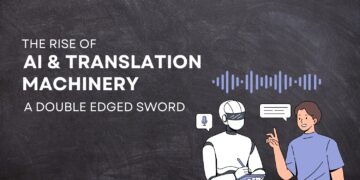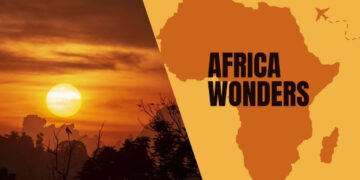The desire for technological advancements have been with us since before the Agrarian revolution and cuneiform writing in Mesopotamia about 12,000 years ago. Human civilization demanded assistance, through technology, to enable them to work faster and more efficiently as they could not entirely depend on human labour. These innovations have continued over the years, transforming industries and creating better outcomes while supporting humanity to realize their desired goals in daily existence.
From the clay tablets in Mesopotamia, the Egyptian papyrus reeds to the discovery of paper and eventually computers and computerized writing, language preservation has undergone remarkable transformations. This transformation and continued globalization also birthed the Language Services Industries. The language services industry in Africa, providing services for African languages in translation, interpretation, localization, media localization and publishing with the intention of promoting and preserving the indigenous African languages and culture has also been caught up in this evolution, with a continued desire to provide services that are adequate, reliable and faster for clients.
Thus, Artificial Intelligence (AI) is one of those technological advancements that are being adopted to encourage machine learning, automated content creation and moderation and speech-to-text programs. Alupo et al, in an article titled ‘Realizing the potential of AI in Africa’ emphasizes that the Global South cannot distance itself from the disruptive influence of artificial intelligence in their economies, from manufacturing, to services, to governance and its potential benefits if they have to match up to the Global West.
The challenge however is how the use of AI for the promotion and preservation of African languages and cultures will not alter meanings of words and distort cultural values. This article, therefore, looks into how language service providers, stakeholders and custodians included, can maximize the use of AI in the promotion and preservation of African languages in localization without interfering with the original meanings of words and phrases and also not undermining African cultures. Localization in simple terms is adapting services and products within the needs of a particular culture, language or defined populations.
Understanding AI: Computer-Assisted Translation Systems Versus Machine Translation
If you constantly access the internet for information, it is certain that you have found yourself on websites that are in a language you do not understand and thus used Google Translate. This is one of the most used language translators. Or you are watching a film whose language you don’t comprehend on YouTube and your movie is accompanied with words appearing magically below the screen, known as subtitles, to help you understand what the film is about.
Sometimes the words are incomprehensible but somehow you manage to grasp a thing or two. This is possible because of computer aided translations systems and machine translation that is a product of artificial intelligence. In a recent conversation with Nat King Taylor on Africa’s LSP Podcast by Bolingo Consult which you can listen to here, Sylvain Agbolo, an African language activist, linguist founder of Multilingualism Week Conference and translator in Accra, Ghana, emphasizes the need for language service providers and translators of African languages to acquire skills on AI to aid them in their work and enable them compete favorably with their competitors.
First, we have to understand how this intelligence works and the kinds available and then look at their pros and cons in promoting and preserving African languages and cultures. A computer-aided translation, also called computer-assisted translation (CAT) tool, is a software with a Translation Memory (TM) at its core to assist in collection of individual translation units in a database. The CAT supports translators in preparing translations by converting texts, segmenting and then availing these segments for translation. You can read a detailed explanation of CAT and how it works here. Just as the name suggests, the CAT tool’s work is to support a human translator and cannot do translations independently.
Studies show that translators work 28% faster when engaging CAT tools in their translation works. They also offer translations that are fast, of high quality and ensure consistency of the translations. Moreover, it enables the preparation and segmentation of translations in a variety of formats like Microsoft Word, XML files, Excel and PowerPoint files as well as Open Office files. Some of the popular CAT tools available in the market include: memoQ, Smartcat, SDL Trados Studio, Wordfast, Across and OmegaT.
Machine translation application (Machine translation) is the opposite of CAT as it works independent of human involvement. This means that in a Machine translation program, texts are fed to a computer algorithm that automatically translates it to another language. There are three types of Machine translation methods: a) Rules-based: relies on grammar and language rules that have been developed by language experts, and also used on highly customisable dictionaries. b)Statistical machine: this method works by analyzing human translations that are already in existence in large volumes and c) Neural machine:
This method works by teaching itself translation using a large neural network. It has gained popularity against rules-based and statistical machines because it provides better results than the two. Some of the popularly used machine translation application programs include: Systran, DeepL, Microsoft Translator, Amazon MT, Tilde MT, Google MT and Omniscien Technologies.
The pros and cons of translation of African languages through AI
As per the discussion on artificial intelligence programs on language translation, it is obvious that humans cannot distance themselves from this technology as the demand for its use keeps increasing. Globalization keeps demanding for localization, economically, socially and culturally, which means that there is a technological demand to service this desire for efficient and effective results. Africa can benefit greatly in the preservation and promotion of its indigenous languages through translations via artificial intelligence programs.These languages will not only be accessible to millions of people all over the world but also not be threatened to extinction.
Alana Cullen, in the article ‘How artificial intelligence “works” in literary translation, cites that Google Translate, at the time of its launch in 2006 could translate only two languages. Ten years later, 2016, it was able to translate over 100 billion words per day while supporting over 103 languages. Currently, it has gone beyond translation and transcribes eight of the world’s most spoken languages in real time.
Even though language service providers are embracing AI programs in carrying out translation, they still engage human editors and translators, known as ‘post-editors’, to cross check the results. While it is less costly to work entirely with the artificial intelligence programs, depending on them only could result in substandard work. The complexity and dynamism of language still requires human input as the machines do not have the capacity to accurately identify the nuances of language. Sylvain encourages African translators to constantly train and refresh their skills in AI as it does not mean that their services will be rendered useless if they engage in it. For it is only through the translators that the African languages will be input in the data system of the translation intelligence programs without distorting the meaning.
It is important to note that the CAT tools and the Machine Translation (MT) programs work differently and also serve different purposes. CAT tools lean towards professional use and are not suitable for non professional users and the engagement of human translation is not only limited but also costly. This therefore means that MT programs, while their cost is low and non professional users can work with it, they are not as reliable as the CAT tools. Their major advantage is that they are accompanied by human reviewers or translators to ensure data output is adequate. This is probably what can work around the complexity of the African languages that are over 2000 with each having their own grammatical structures and pronunciation.
In a discussion with Stephen Kiilu, an African Master’s in Machine Intelligence student at AIMS Senegal, currently researching on how to preserve African languages through NLP (natural language processing), he shares that the greatest challenges involved in creating AI translation is getting adequate human translators that can help generate data for intelligence systems to use in translation. NLP is an emerging artificial intelligence field that trains computers to understand human languages.
Stephen explains that intelligence systems need a large pool of data, which African languages do not possess, in creating translations that can be used in real time. Most of the data on African languages is largely on bible translations which is not adequate to create a translation system for African languages. Unlike Kiswahili, which has a large pool of data through research, documentations, dictionaries online amongst others, indigenous languages, even though spoken fluently by its speakers, do not have this advantage.
Meta AI, from Meta technology company, emphasizes the concerns raised by Stephen Kiilu, noting that AI translation systems of today are not designed to serve the thousands of languages used around the world, or to provide real-time speech-to-speech translation. Meta technology is an American multinational technology conglomerate that owns Facebook, Instagram and WhatsApp, and other services and products, owned by Mark Zuckerberg.
In 2022, Meta announced a new AI Model, No Language Left Behind (NLLB), that will translate 200 languages that will enable more people to have access to technology. Yet still on these social media platforms, the translation is not as adequate as desired. This means that artificial intelligence requires the input of human labor to realize its goals. It also means that Africa should invest more in technologically advancing it indigenous languages to avoid distortion of meanings and interference of culture, its norms, values and mores. And the only way for these indigenous languages to be preserved and promoted without meanings of words being distorted is to have proactive stakeholders and custodians in the language service industry working together to achieve this goal.
In Conclusion
Artificial intelligence will not take the place of humans. As discussed in this article, there is a lot of human labour that is needed to enable the success of AI in translation. If all the 2000 and more languages spoken in Africa have to be translated through AI, it means that the job market in the language services industry is bigger than can possibly be imagined. The preservation and promotion of African languages, and by extension African cultures should be treated with the urgency it deserves.
Through the articles on the role of stakeholders and custodians of African languages and cultures, African languages are on the verge of extinction due to the competition with other internationally recognized languages. Yet, Africa still needs to have international recognition and relevance to compete favourably with other nations globally to achieve its economic, social, political and cultural goals. Artificial intelligence, if well explored, is the future for the preservation and promotion of African languages and cultures.
There is already international backing on the importance of the promotion and preservation of African languages for sustainable development. It is therefore upon Africa to tap into its resources to harness and maximize the use of artificial intelligence for language translation to achieve its goals.










